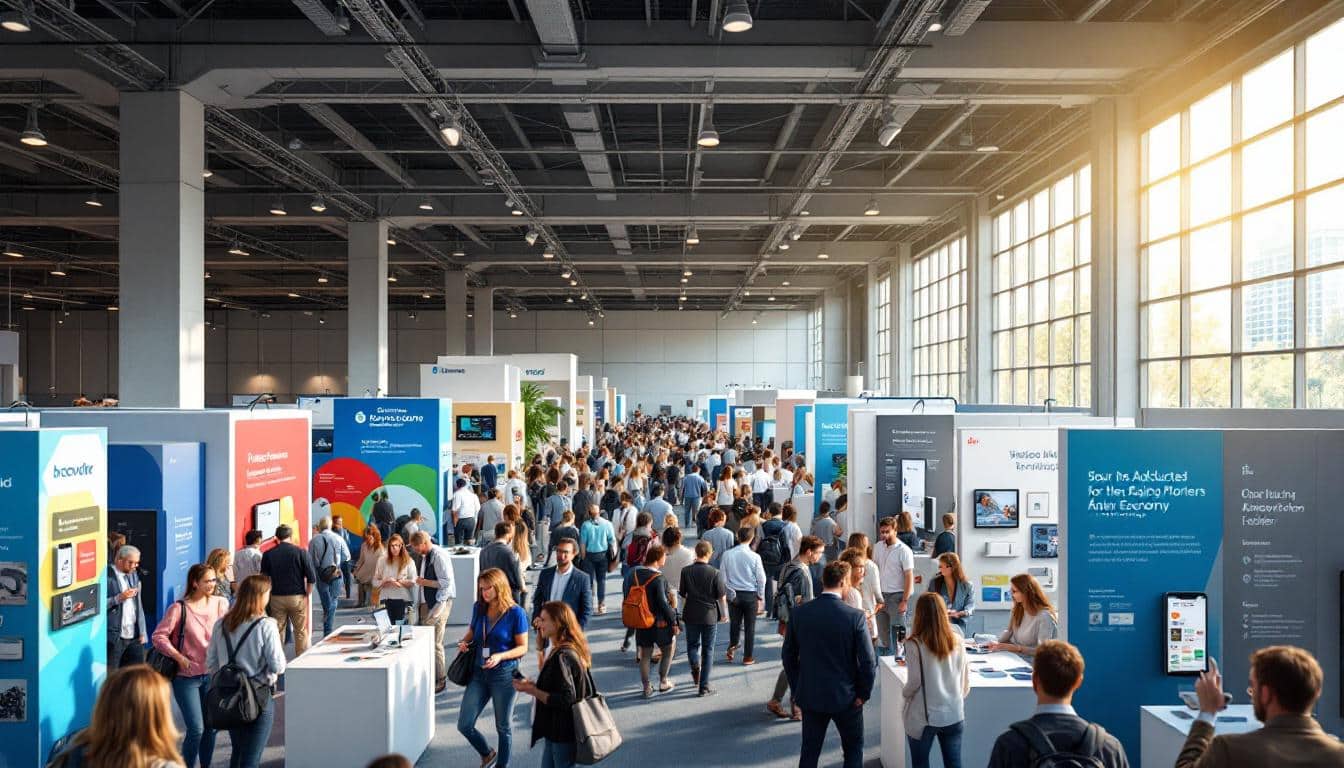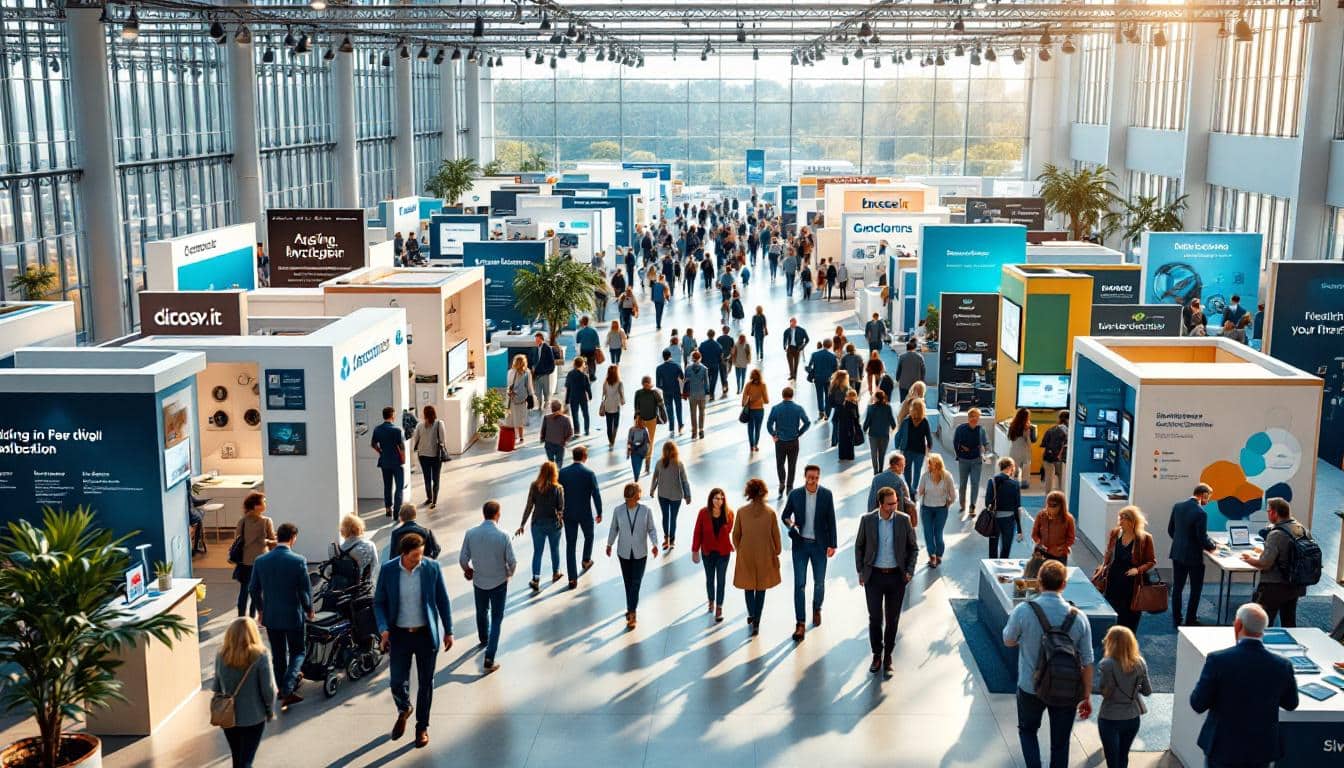We value your online privacy and security. To provide an optimal experience, we use cookies and data. Discover how we protect your personal information.
We monitor interruptions and protect against spam, fraud, and abuse. By analyzing our audience engagement and our site’s statistics, we better understand the use of our services and improve their quality. If you choose “Accept All,” we will also use data to develop new services and publish personalized content tailored to your preferences. For an experience tailored to your needs, explore our privacy management options.

Table des matières
ToggleKey innovations presented by companies in the silver economy
The silver economy is experiencing unprecedented dynamism, with around 500 companies present to unveil their latest innovations. These companies focus on solutions tailored to the growing needs of the elderly, ranging from advanced health technologies to personalized leisure services. Notable innovations include home health monitoring technologies that enable proactive management of medical conditions, while digital platforms facilitate communication and social engagement for seniors. Furthermore, companies are developing ergonomic and accessible products, thereby improving the quality of life for users. This multitude of innovations underscores the growing importance of the silver economy in the global landscape, effectively addressing current demographic challenges.
The most dynamic sectors in the silver economy
Several sectors stand out in the rise of the silver economy. The health sector leads the way, with innovations such as care robots that assist the elderly in their daily activities. The technology sector also plays a crucial role, developing applications and connected devices to monitor health and facilitate daily living. Moreover, the tourism sector is adapting by offering specific packages for seniors, promoting active and healthy aging. Shopping malls, for example, adjust their services to better meet the needs of this growing population [source]. These dynamic sectors illustrate the diversity of opportunities offered by the silver economy and their potential to transform services for the elderly.
How these innovations meet the needs of seniors
The innovations in the silver economy are specifically designed to meet the unique needs of seniors, promoting their autonomy and improving their quality of life. For instance, smart health technologies allow for continuous monitoring of vital signs, ensuring prompt intervention when necessary. Additionally, tailored leisure services and communication platforms facilitate the maintenance of social relationships, crucial for the mental well-being of elderly individuals. Mobility solutions, such as autonomous vehicles, offer greater independence for seniors, allowing them to move easily without relying on others. These innovations demonstrate a deep understanding of the challenges faced by seniors and illustrate how the silver economy can provide comprehensive and effective solutions.
Government initiatives supporting the silver economy
Governments play an essential role in developing the silver economy by implementing initiatives and policies that promote innovation and support specialized enterprises. In Hong Kong, for example, the government launched 30 initiatives to energize the aging economy, encouraging businesses to develop innovative and sustainable solutions [source]. These initiatives include grants, tax breaks, and public-private partnerships aimed at creating a favorable ecosystem for innovation. Additionally, conferences and working groups, such as those dedicated to promoting the silver economy, facilitate increased collaboration among various stakeholders, thereby enabling knowledge sharing and the adoption of best practices [source]. These government efforts are crucial for supporting the growth and sustainability of the silver economy.
Emerging technologies and their impact on the well-being of the elderly
Emerging technologies play a decisive role in enhancing the well-being of the elderly by offering innovative and accessible solutions. High-tech robots are revolutionizing elder care in China, providing personalized assistance and improving the quality of home care [source]. These robots can help with daily tasks, monitor health, and provide companionship, thereby reducing the burden on human caregivers. Furthermore, artificial intelligence and machine learning enable the development of predictive health systems capable of preventing diseases before they occur. These technologies not only offer a better quality of life for seniors but also allow for more efficient management of health resources, thus addressing major demographic and economic challenges.
Future prospects for the silver economy
The future of the silver economy looks promising, with growing demand for innovative solutions tailored to the needs of aging populations. Companies will continue to invest in research and development, exploring new technologies and services to improve the well-being of seniors. In addition, international collaboration and public-private partnerships will play a key role in the expansion and dissemination of innovations. Current trends indicate an increase in the integration of digital technologies into health, leisure, and mobility services, making life easier and more fulfilling for the elderly. Furthermore, increased awareness of aging issues and proactive government policies will ensure sustained growth of the silver economy, creating numerous opportunities for businesses and a more serene future for seniors.
Hier soir, les acteurs clés de l’écosystème de la silver économie se sont réunis lors de la soirée annuelle de @SilverValley_ chez @GoogleFR.
— Synerpa (@SYNERPAcom) December 12, 2024
La silver économie est à un tournant : face aux défis démographiques, elle doit conjuguer prévention, santé, sécurité et soutien aux… pic.twitter.com/cYMFPpW2PF








